Good landscaping in and around your chicken coop can improve flock health by providing well-ventilated shade in the heat of summer and fresh supplemental forage year-round.
Well-managed plants help bind the nitrogen in the soil that is produced by chicken manure and minimize run-off by aerating soil into a sponge-like consistency that’s better able to absorb rainwater.
In this article, I’ll be reviewing the creative planting methods we use at Hawk Hill, plus a few trial-and-error-proven plants we’ve come to use in and around our coop year after year.
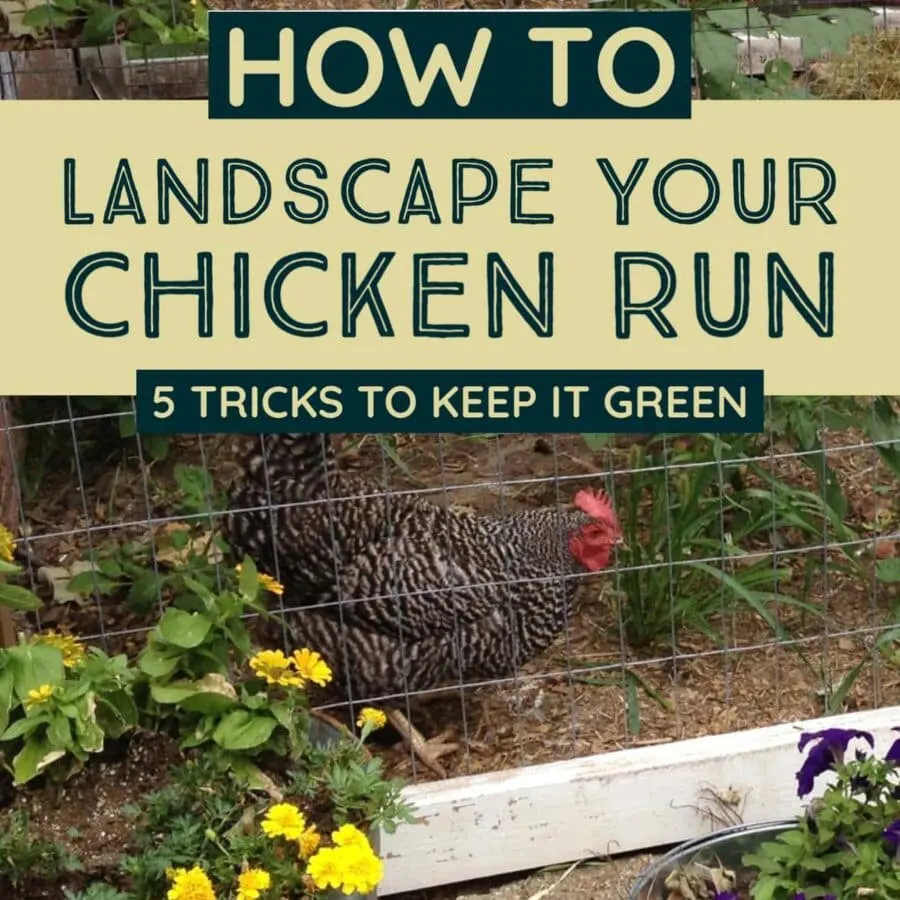
List of Recommended Plants for In & Around Coop:
| Best Plants for Inside Coop Run | Best Plants for Around the Outside of a Chicken Coop |
| Native Trees (prune as described) | Trellised Watermelons (+ other robust vines) |
| Oat Grass (in grazing boxes) | Marigold |
| Sunflowers | Potted plants |
Over the years (nearly a decade of chicken keeping, now!) I’ve experimented with various methods of keeping my coop, run, and the surrounding area landscaped and green. Good chicken-coop landscaping includes a balance of well-chosen vegetation with foliage-friendly coop management practices. In this article, I’m sharing 5 of the planting methods that work best to keep my chicken coop and run clean, cool, and cheerfully green:
How to Landscape Coops to Keep Plants in a Chicken Run Alive:
The following section may contain affiliate links. As an Amazon Associate, we earn from qualifying purchases.
Suggested Materials:
1. Build Chicken Grazing Boxes
Starting around 2011, I created slightly elevated platforms using scrap lumber and wire mesh that allow the chickens to nibble green grass while preventing root damage. These boxes give young grass the protection it needs to grow thick even in a crowded chicken run, while providing forage and entertainment for enclosed chickens.
Chickens occupied with grazing boxes are less likely to peck at other chickens or develop other problem behaviors.
See my tutorial on how to build a chicken grazing box or skip straight to this free plan for making your own:

OAT GRASS is my favorite to plant in grazing boxes, because it’s cheap and will germinate in cool weather (down to 38 degrees F!). Feel free to get sloppy when planting these grazing boxes- chickens love oats as scratch-feed scattered on the ground around the boxes. According to Michigan State University: “Oats are a cool-season annual grass that grows well during the fall. Some of those benefits include: forage, weed suppression, nutrient removal, erosion control, and soil softening.”
2. Close & Plant Your Chicken Run in the Spring
Spring is a great time to completely close off access to your chicken run and relocate chickens during the daylight hours (free-range your chickens or place them in a tractor to till garden beds). If your hens exit their coop via the run, you can build a chicken tunnel to limit their access.
Use 2-8 weeks each spring as an opportunity to plant your run and close it off to your chickens completely. After a winter of cooped chickens, by early spring my chicken run is muddy and barren. I close off the entrance to the run in favor of daily free-ranging and I plant sunflowers and oat grass.
A March/April rest for my chicken run means grass seeds germinate undisturbed and perennial plants emerge from dormancy without the stress of pecking.
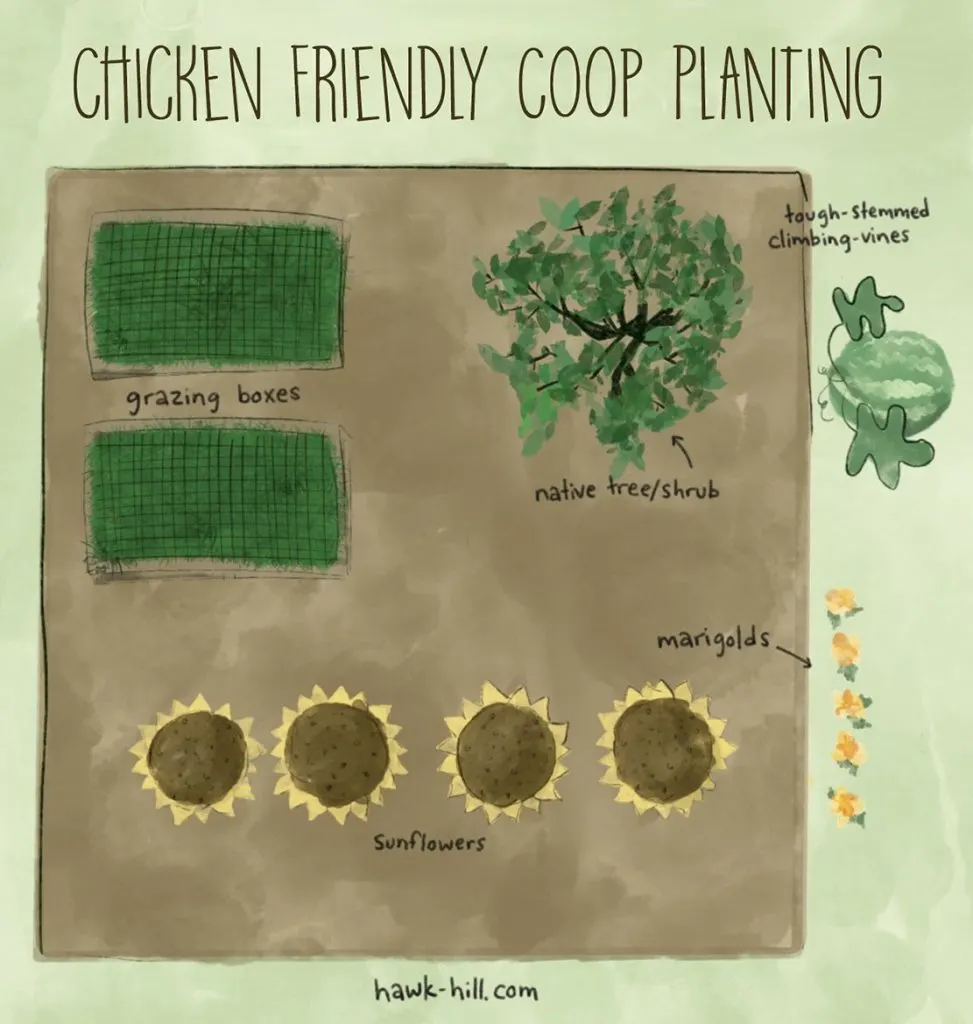
Depending on the number of chickens you have and how often you free-range, the coop planting season can feel like an exercise in futility, however, I’ve always felt like even if it’s temporary, it’s worth the aid in preventing soil erosion (and manure run-off), by encouraging seed/root growth, and providing forage and shade for my birds during the summer.
For planting inside the coop, I choose varieties, like Sunflowers, that have tough stems that rapidly outgrow the chickens’ reach.
Sunflowers, if given a headstart, can tolerate growing inside a chicken run. Planting sunflowers in April or May can produce mature heads of seeds to supplement commercial chicken feed in the fall.
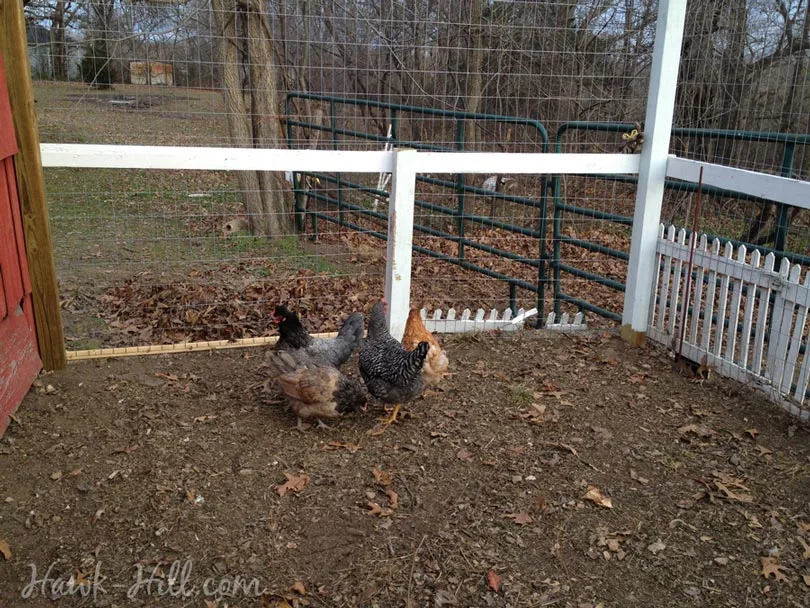
3. Get a Jumpstart by Planting Native Perennials
For most plants, a chicken run spells doom, but plants that thrive in your climate are more likely to stand up to the rigors of the coop. In southern Missouri, a Redbud Tree that I absolutely decimate with a vicious annual pruning to keep it shrub-sized is the star of my chicken run.
Consider what grows naturally without tending in your climate. Native plants have an edge, and are more likely to thrive in tough-to-plant areas like a chicken coop. Check out this Native Plant Finder Tool for insight into your local flora. If you have nuisance plants that grow aggressively in other sections of your property, consider digging them up and transplanting to your coop.
Whatever you plant, you’ll need to plan on fencing off that section to allow your perennials to get established. In my experience, setting up an enclosure with small-mesh fencing is often the best way to protect a plant without taking up too much of the coop-run-real-estate. Rubber mulch rings are also helpful for protecting roots once chickens do have access. Although it’s a long-term commitment, the shade of a small tree or shrub established in your coop is worth it! Shrubs and small trees in your coop promote flock health- your birds will spend the heat of summer under the shrub breathing fresh breezes rather than retreating to a stuffy coop interior.
4. Use your Chicken Coop Run as an Arbor
I think my most surprisingly successful method for landscaping my chicken run has been landscaping over and around the chicken run. Plants that vine up, over, and around the coop provide shade, and once the plants are established chickens generally leave the thick stems alone. Growing Watermelons Vertically on a chicken coop has been very successful for me, and a symbiotic gardening method where the chickens fertilize the watermelon, which then shades the chickens and provides chicken food.
Many vining plants can work for this application, but melons (which thrive in the high-nitrogen content of chicken manure) can produce prolifically in soil that will kill many other plants.
Although the chickens can’t reach the melons growing overhead, after you’ve harvested and prepared the watermelon, chickens love the rind. Read more about using your coop as an arbor here.
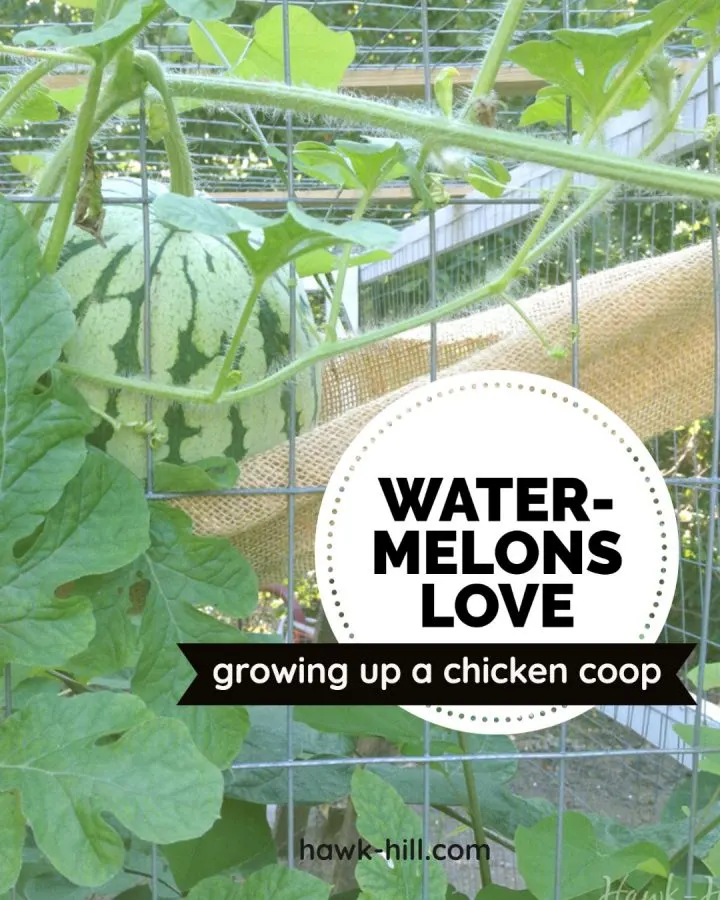
5. Add Potted Plants & Boxes Outside the Run
Landscaping around the outside of the run is a popular choice for making chicken runs seem less barren. It’s a great opportunity to bring color to the space and even produce your own feed supplements. My free woodworking plans for tall cottage inspired planter boxes can create a lush green space.
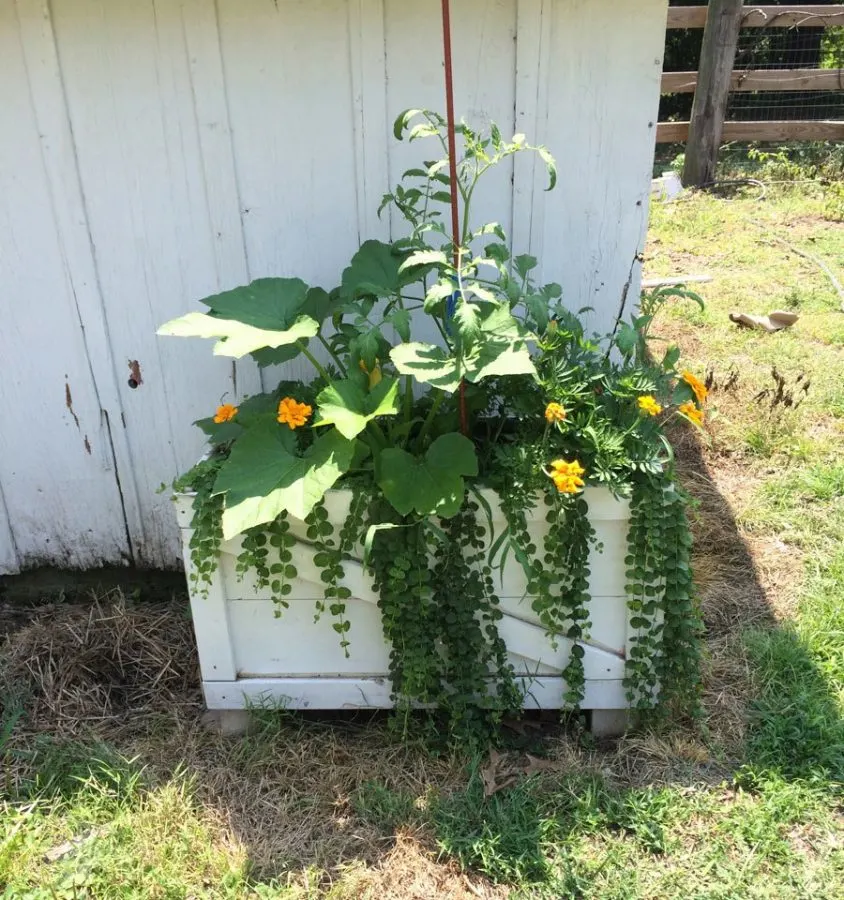
Marigolds are a particularly good choice for planting around a coop- the flower heads can be fed to chickens to brighten egg yolk color (marigold petals are an ingredient in some commercial egg-layer chicken feeds, for this same reason) and the fragrance put off by marigolds deters flies and other insect pests. (Read more about growing Marigolds via Clemson University).
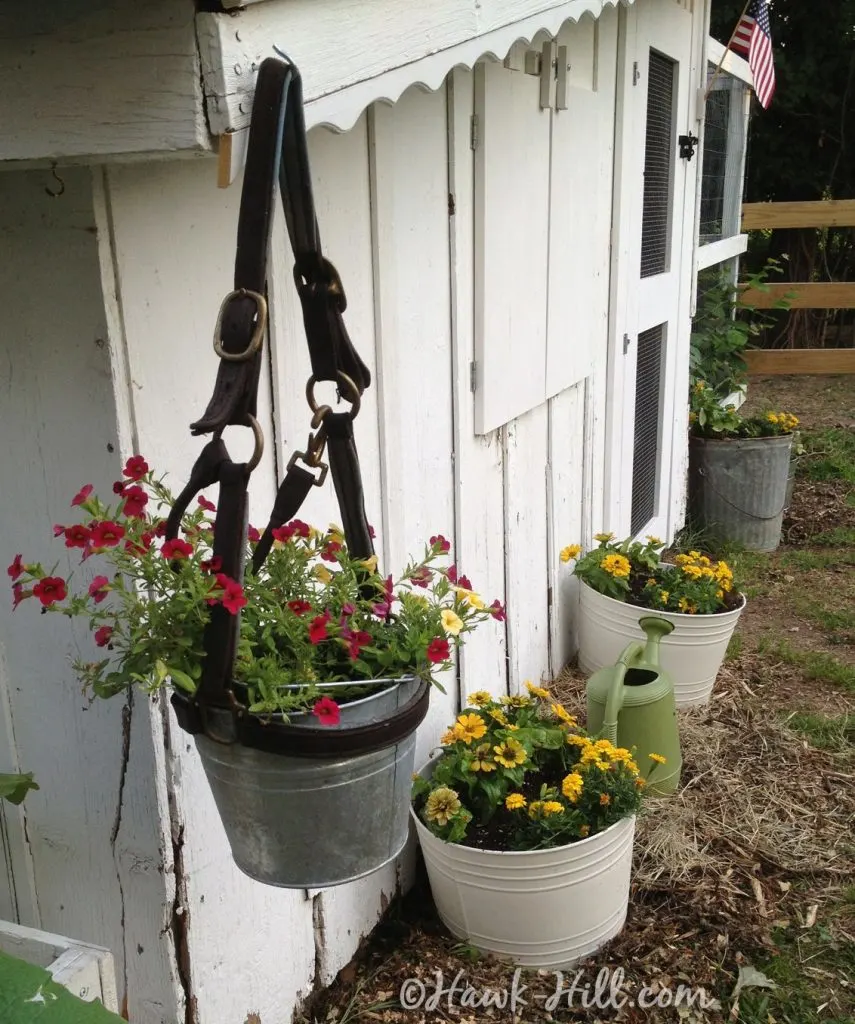
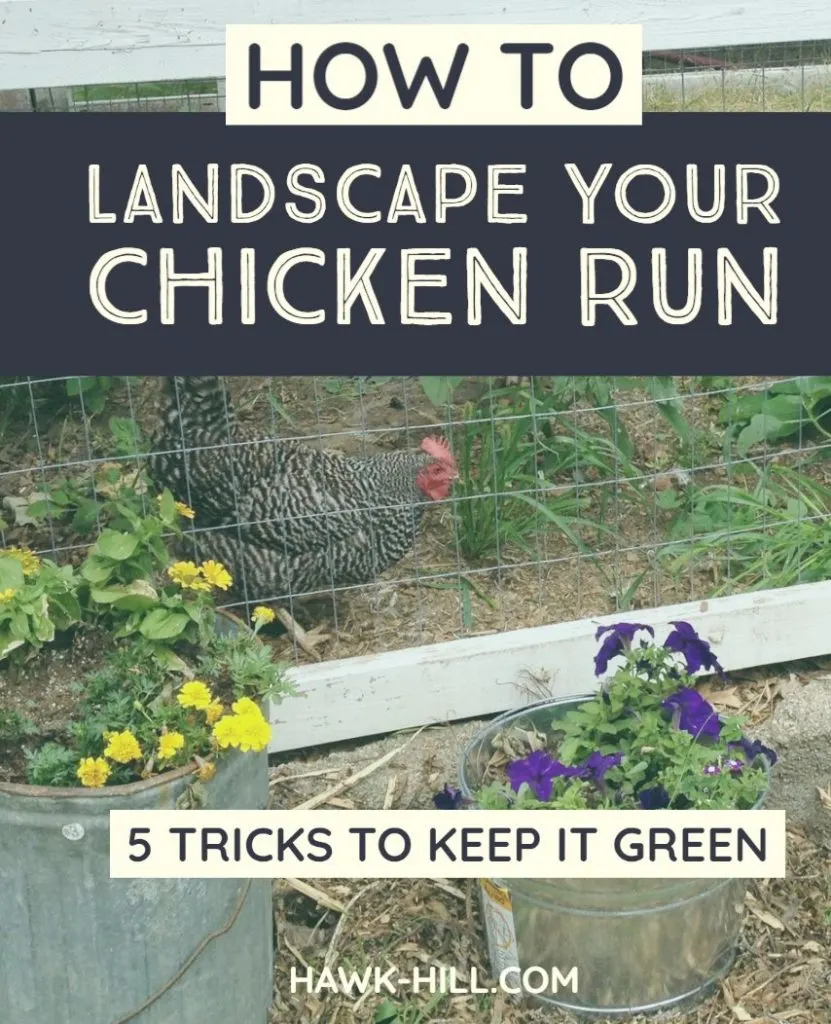
Thanks for Reading!!!
I hope you can tell that I love DIY, researching the best affordable solutions for every-day problems opportunities and documenting / sharing solutions!🙌 Hawk-Hill.com is reader-supported.
☕ Hawk-Hill.com is reader-supported. If this article saved you time or money, please consider donating $1 to help me cover the cost of hosting this website OR If you appreciate this information and want to throw a “Thanks!” my way by buying me a coffee – I would Of Course appreciate it! :]
Reader Questions and Recommendations
Readers, do you have any favorite topics / posts? What would you like to read more about in the future? As I hope you can tell from this and other articles on my site, I really enjoy DIY / a good challenge, and I’m not afraid to roll up my sleeves to figure out a great, and hopefully simple 😁 solution. So please feel free to let me know in the comments below (or reach out via social media)!
Ok Really – I’ll try to wrap this up now😂
Finally, if you’d like to continue to learn about interesting DIY options as well as how YOU can tackle creative new projects consider checking out the latest and most popular articles listed on the Hawk-Hill Home Page. I’m always trying to enjoy and write about the creative side of life so please don’t be a stranger – check back often!😍
If you enjoyed this post you may also enjoy reading / perusing / devouring😊 one or all of these articles as well!

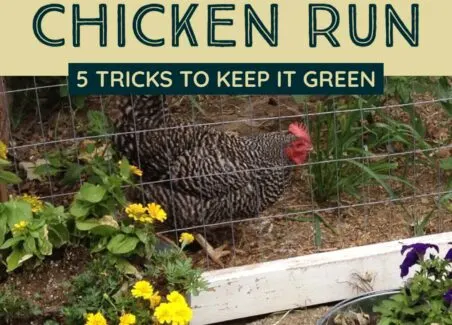
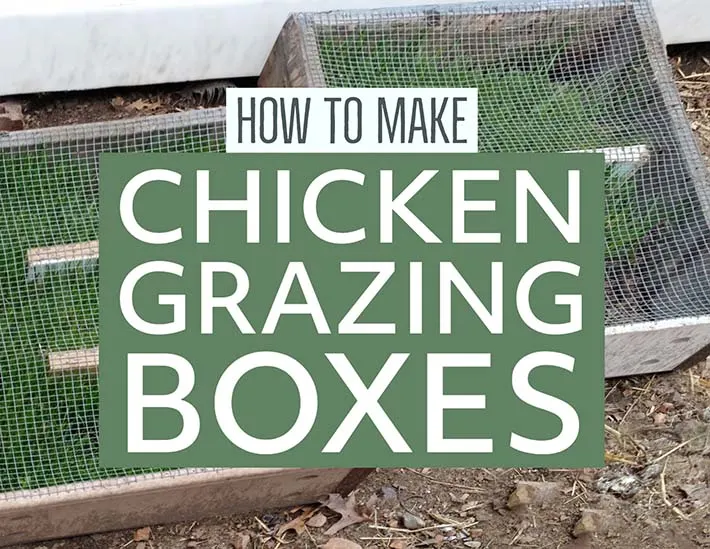
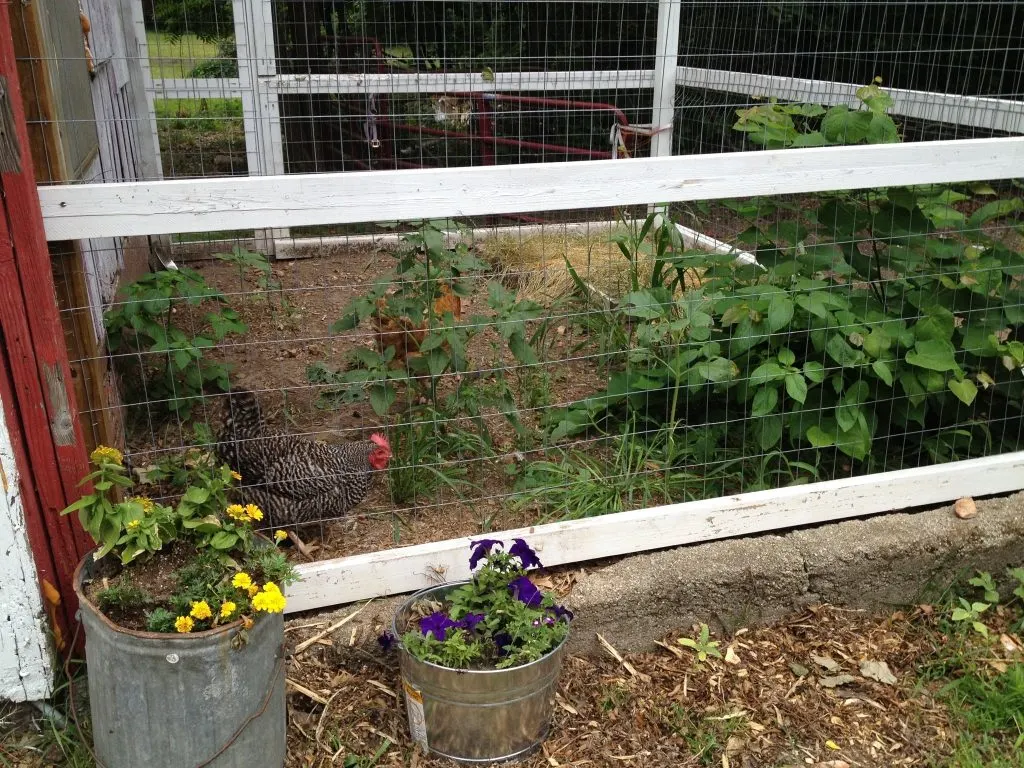
daisy
Sunday 17th of March 2024
Thank you for the great ideas! I had already decided to plant sunflowers all along one side of the run, to hide it from the street side of our property. I also will grow things vertically, like loofah, hyacinth bean and melons, which will add shade to the run. I hadn't thought about the marigolds, but I have tons of seed and I can easily get that done today. Blessings...daisy
Jackie Hartley
Saturday 18th of September 2021
We just fenced in a big wide open run. Is it safe to plant a chaste tree (I have other chaste trees outside my run area....) inside my run? I was planning to do this to create shade but just had the thought..."would this be a perfect landing spot for a hawk or any flying critter to land and come down to get one of our chickens"? I was hoping the tree would be more of hiding space for my chickens from any thing flying over that might see them. Will you let me know your thoughts please?
Thank you. (I'm in GA)
Lindsayanne Brenner
Saturday 18th of September 2021
Hi Jackie, I' not familiar with Chaste trees and have never had a run without netting over the top to deter predators, but what I'd suggest is keeping any tree inside your run pruned low and wide. (Most native trees will tolerate that middle central leader being chopped off and still grow happily in a coop, sending energy to mostly-horizontal growth instead of vertical) If the tree stays under 6ft, a bird of prey won't be able to use it as a lookout, and as long as you let it ramble horizontally, the branches should provide lots of shelter for your birds.
Lizzie
Thursday 6th of May 2021
What bushes can you put in chickens run that grows all year round i have a butterfly bush already need ideas
Lindsayanne Brenner
Thursday 6th of May 2021
Hi Lizzie. That's a great question! The answer will really depend on your specific location, and if you want something that grows year round you might be limited. Is there a type of evergreen or fern that is native to your area and eagerly trying to take over other parts of your yard?
I've tried planting so many things in my chicken coop run to landscape it, but my best results have been transplanting native plants into the coop and giving them a really robust fence until they are well established.
Mike
Thursday 25th of February 2021
This is some great info. I will likely do cucumbers up the run this year. I usually grow those and green beans over a cattle panel arch. My girls love them and there’s always enough for all of us and them too. I already had the grazing boxes in mind. One thing I have thought of is a heater for cold time in the coop. Came up with (since light can be a problem) putting a heat light inside either a metal trash can maybe with gravel if some sort to help hold and dissipate heat or maybe a grill. What ideas do you have?
Nicole
Friday 1st of July 2022
@Mike, you should look into a radiant heater/brooder. We got one for our baby chicks but the heat can be switched from brooder to a heat setting.
Wendy
Wednesday 28th of October 2020
I also grow cucumbers, mini pumpkins, runner beans, hummingbird vine, clematis, a grapevine, and honeysuckle on the fence around the chicken pen. In the pen I have a butterfly bush , a small Japanese maple, and a willow tree (I pruned it to make it bushy for more shade). The fire-evacuee goats we hosted during the wildfires pruned all of these and I won't know until spring if the maple survived. The pen also has a variety of grasses that have deep enough roots that the chickens can't dig them up (I used something similar to the grazingframes to gette grass started). We let the Fescue go to seed so they can eat them (be sure it's not the Fescue that's got the symbiotic fungus in it that causes fescue foot in cattle).